Ryan Hall's Blog, page 222
September 2, 2016
Shoe of The Week: Hoka One One Speed Instinct

Lightweight and fairly low to the ground, this shoe takes a cue from Hoka’s new line of svelte and speedy road shoes. Unlike Hoka’s more thickly cushioned trail models, the Speed Instinct serves up a fast and agile ride with a more acute proprioceptive feel for the trail. Our wear-test team found it to have just enough soft cushioning under foot and appreciated the slightly firmer and very responsive feeling in the forefoot. In other words, this shoe has plenty of giddy-up! (The Speed Instinct doesn’t have a rock plate sandwiched within the midsole, but the firmer forefoot helps keep pointy rocks, roots and other debris from the trail at bay.) With a full-length knobby rubber outsole with direction lugs, it offers consistent traction over all types of terrain at all speeds. The ride is soft, flexible and nimble without any structure to get in the way of the natural movements of your foot, but that also means it’s not a very inherently stable shoe. That’s just fine if you’re a nimble runner with some experience running on uneven surfaces, but perhaps a word of caution to others. That’s not to say our wear-testers didn’t like this shoe; they loved it! We pegged this as a great short-distance to mid-range shoe for running fast, ideal for sub-ultra racing, hill repeats and tempo runs. But it’s also not too shabby for fun casual runs through a variety of types of trails. The Speed Instinct earned a “Best Debut” award in the Fall 2016 Trail Running Shoe Buyer’s Guide in the October issue of Competitor.
This is the shoe for you if … you’re looking for a lightweight, low-to-the-ground trail shoe that is built to run fast.
Price: $130
Weights: 8.4 oz. (men’s), 7.5 oz. (women’s)
Heel-to-Toe Offset: 3mm; 22mm (heel), 19mm (forefoot)
Info: HokaOneOne.com
RELATED: Shoe of the Week—Saucony Xodus ISO
The post Shoe of The Week: Hoka One One Speed Instinct appeared first on Competitor.com.
Molly Huddle’s Post-Olympic Recap of the 10,000m Final
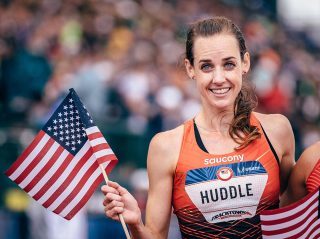
Photo: Courtesy of Saucony
It was the greatest 10,000-meter race ever. Ethiopia’s Almaz Ayana ran 29:17.45 to win the Olympic gold medal and set the world and Olympic records in the women’s 10,000 meters. Ayana wasn’t the only runner setting records: Finishing behind her, seven other runners set national records, including Saucony athlete and two-time Olympian Molly Huddle.
On a cloudy morning at Olympic Stadium, Huddle set out on the bright blue track with 36 other runners in her first Olympic 10,000-meter race. It’s clear Huddle’s thoughts were racing as fast as her legs.
“At the start I thought, ‘Get ready to hang tough.’ At two miles I thought, ‘Oh man, they’re not messing around.’ At 5K I thought, ‘Keep your eyes ahead of you; try to grind out 73 (seconds per lap),’” Huddle explains.
Huddle had a plan and 25 laps to carry it out. This was not the time for running on empty; her thoughts were overflowing with race strategies and Olympic dreams.
“I knew the race would go out fast and it did—I ran through 3,000m in 8:54 and 5,000m in 14:55. The splits in the 10K were hard to comprehend,” she says. “I knew it would be a race for the ages when the pack was actually accelerating after going through the 5K well under 15 flat!
“I knew I couldn’t red-line and just hope to hang with them. When I realized I could not hang on, I tried to focus on reeling in the next woman ahead of me and not slowing down. My plan was to run 15:20 for the second 5K. With that I could at least get the American record and hopefully catch some more runners ahead of me.”
Though Huddle started the race with 36 other Olympians, the pace of the top group left the field spread out and in some cases, lapped.
“It was a lonely last 5K for me and hard to reconcile trying not to get lapped while also trying to stay on pace for the American Record,” Huddle adds.
When it was all over, Huddle had broken an eight-year-old American record in the 10,000. Her time of 30:13.17, good for sixth in the event, was more than 9 seconds better than the 30:22.22 mark set by Shalane Flanagan at the Beijing Olympics in 2008.
My dream was not to finish 6th at the Olympics. I was disappointed to not be closer to 4th or 5th,” says the 31-year-old athlete. “I enjoy the wild race among competitors over the last two laps but I fell off too soon to do that.”
Huddle’s Olympic finish now gives her the American outdoor records in both the 5,000m and 10,000m. She has held the 5,000 record since 2010, lowering that mark to 14:42.64 in 2014. Molly’s 10,000-meter Olympic time shattered her personal best of 30:47.59 by 34.42 seconds.
Huddle, who has lived in Providence since graduating college, qualified for Rio by finishing first in the 10,000 at the Olympic Trials with a time of 31:41.62. She also won the 5,000, becoming the first woman to sweep the 5K and 10K at the U.S. Trials or any U.S. track championship meet. Huddle elected to run only the 10,000 in Rio because she wanted to start training for her first marathon, which comes in November at the New York City Marathon.
The post Molly Huddle’s Post-Olympic Recap of the 10,000m Final appeared first on Competitor.com.
September 1, 2016
Miracle Runner to Return to Rock ‘n’ Roll Virginia Beach Half Marathon

Competitor Group Inc.'s (parent company of the Rock 'n' Roll Marathon Series) senior vice president, John Smith (left), visited Greg Kenney Jr. during Greg's recovery to check on his progress.
Some time about 10 a.m. on Sept. 5, Greg Kenney, an experienced long-distance runner, will walk down the finishing chute at the Rock ‘n’ Roll Virginia Beach Half Marathon. Waiting for the 55-year-old former Air Force chief master sergeant and seated in a wheelchair will be his 18-year-old son, also named Greg.
Greg Sr. will push his son the final stretch past the finish line. There will be tears and there will be cheers. “It’s almost like we’re going to finish what we started,” Greg Sr. says.
Father and son started the Rock ‘n’ Roll Virginia Beach Half Marathon last year. Father finished, son did not. Were it not for Adrianna Amarillo, a 29-year-old Navy doctor who stopped when she heard screaming cries for help at about mile 12 of last year’s race, Greg Jr. might not be alive today.
“Greg has three guardian angels,” Greg Sr. says. “There’s his mother, his godmother and Adrianna.”
Last year, Greg Jr. collapsed near mile 12, lapsed into cardiac arrest, went minutes without breathing and suffered brain damage. Weeks later, a doctor told Greg’s parents that their only child would live the rest of his life in a vegetative state.
Instead, he has made a remarkable recovery. With the use of braces and a walker, Greg Jr. can walk 20-yard laps at home, which takes him about 10 minutes. His speech is slow, halting and warbled. But he can talk, and from his wheelchair, spoke a few words when his high school class graduated in late May.
“He has come light years,” Greg Sr. says.
“A physical therapist said they’ve never seen someone with so much brain damage come back so far, so quickly,” Greg’s mother, Stephanie adds.
At the time of last year’s race, Greg Jr. was 17 years old, two weeks into his senior year at Grace Brethren Christian School, a private school where his senior class numbered about 40.
With a 4.10 grade-point average, Greg was a valedictorian candidate. He was class president. He was a singer and dancer, performing in more than 60 plays—most in community theater but some on the road, far from his home in Accokeek, Md., about 60 miles southeast of Baltimore.
Like his parents, Greg is devout in his Christian faith. He spent two spring breaks serving missions in Haiti and Belize. He stood 6 feet, 3 inches tall, weighed a lean 165 pounds and had begun hardening his body, pushing through intense T25 workout videos.
When Greg was in the seventh or eighth grade, he traveled with his father to Dayton, Ohio, where Greg Sr. ran the Air Force Half Marathon.
“I want to do something like that one day,” Greg told his father.
Last year’s Rock ‘n’ Roll Virginia Beach Half Marathon was supposed to be that day. Greg Jr., who had never run a road race, trained hard. For more than a year, he jogged three days a week. He knocked off a 14-miler on a treadmill eight days before the race.
Greg Sr. expected his son to finish an hour before him last year. At mile 9, he texted his son. No response.
“I didn’t figure it was anything strange,” Greg Sr. recalls. “I thought he was taking his time.”
Meanwhile, further up the course, Amarillo trudged along. Her half marathon personal record is 1 hour, 51 minutes. But she knew she wouldn’t PR at Virginia Beach. She had stayed out late the night before, celebrating her birthday with her sister, her head not hitting the pillow until 2 a.m. She considered no-showing, but had changed her mind.
Just past mile 12, Amarillo heard a scream from behind her.
“Medical! Medical!”
“I turned around and saw a woman bent over a collapsed person,” Amarillo says. “I had to go because I’m an ER doc. It would be wrong for me not to.”
Greg Jr. had fallen to the ground.
“He was totally green,” Amarillo says. “His eyes were rolling in the back of his head, he was gasping for breath.”
She felt for a pulse but couldn’t locate one. She pounded on his chest for what seemed like two minutes but still got no pulse.
“It was the most harrowing time of my life,” she says.
Within a couple minutes, paramedics arrived and took over caring for Greg. Shaken, Amarillo began crying. Minutes later, a paramedic told her that Greg’s pulse had kicked in.
“I started crying even more,” she says.
Amarillo is a lieutenant in the Navy. As part of her medical residency, she worked as an emergency room doctor at Children’s Hospital of The King’s Daughters in Norfolk, Va. She reported to work that night and, ironically, that was where Greg Jr. had been flown by helicopter. She oversaw his care that first night.
Backtrack a month earlier, Amarillo was in Key West, Fla., where her fiancé, who is also in the Navy, was stationed. They were at a bike rack when Amarillo noticed something shiny on the ground. She thought it was a quarter, but when she picked it up she noticed that it was a silver medallion with an angel stamped onto it.
Amarillo recalls, “I wondered, ‘What does that mean to me? Is someone looking out for me?’”
Days after Greg Jr. was hospitalized and resting in a coma, Amarillo gave him the medallion. Greg’s mother had a jeweler mount the medallion on a silver plate and strung to a silver chain. Greg Jr. has been wearing it now for nearly a year.
“I’m convinced Adrianna saved my son’s life,” says Greg Sr.
The past year has been a difficult one for the Kenneys. Greg Jr. was in a coma for nearly three weeks. There was the prognosis that he’d be a vegetable for the rest of his life. There were the hundreds of hours of physical therapy.
He didn’t return home until June 3, almost nine months after collapsing near mile 12.
But so, too, have there been blessings. While Greg didn’t return to school, he attended his class’ graduation and wrote a speech that was read at the graduation. With Greg sitting in his wheelchair in the front of a church, his third-grade teacher read the speech.
When the teacher was finished, a microphone was handed to Greg Jr. “I can’t wait to see the amazing things you do,” he told his fellow students. Then he stood up. Amidst tears, the people in attendance burst into applause.
Greg’s GoFundMe account has raised more than $20,000. Stage construction members of The Port Tobacco Theater Club, Greg’s home theater, surprised the family by building a government-approved wheelchair ramp in the family’s garage.
“To have that stress release gone, are you kidding me?” Greg Sr. says, relieved.
Nearly a year after Greg’s accident, no one knows why his heart gave out that morning along the Virginia Beach boardwalk. CT scans and X-rays show no damage to his heart. Stephanie, meanwhile, relies on scripture for guidance and motivation, often citing Proverbs 19:21:
“Many are the plans in a person’s heart, but it is the Lord’s purpose that prevails.”
“Although our life is much changed and very different, we know that Greg has a special purpose,” Stephanie says. “His story is still being written. We don’t know what it’s going to be, but it’s going to be amazing.”
Come race day on Sept. 5, before Greg Sr. walks the half marathon, Stephanie and other family members will wheel her son through the 5K.
Amarillo, the woman who likely saved Greg’s life, will run the half marathon again. “I have such great hopes for Greg,” she says.
Greg was scheduled to return to high school in late August. He doesn’t like it when the word “handicapped” is used to describe his condition.
“Why do they call it that?” he has told his father. “It’s really a temporary limitation.”
Greg Sr. is confident his son will recover, one day walking the stage again, acting and singing.
“There is zero doubt he’s going to recover,” the father says. “He loves the Lord, and he knows what he wants to do. It could be tomorrow, it could be a year from now, it could be two years. But he will recover.”
The post Miracle Runner to Return to Rock ‘n’ Roll Virginia Beach Half Marathon appeared first on Competitor.com.
Coach Culpepper: Easing Kids Into Running
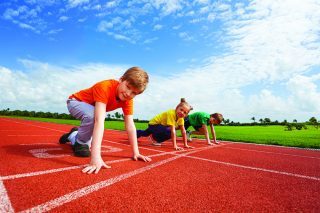
Photo: Istockphoto.com
Teaching kids to run requires an approach that goes against the trend in most youth sports these days. Development, intensity and specialization have continued to shift to younger-aged athletes. Gone are the days of starting a sport in high school or participating in multiple sports throughout the year. Here are a few things to consider as you introduce the sport of running to kids and young athletes.
The younger they are, the more fun it has to be
Let’s be honest, running is nowhere near as fun as the likes of baseball, basketball, football, soccer, lacrosse, gymnastics or all the non-
traditional options available to kids. Running is an acquired taste and takes time to develop an appreciation for working toward goals and individual progression. The younger the runner, the more critical it is to make running fun for them. The best way to guarantee your kid will not run later in life is to make it too intense or too serious early in their development. Some kids are naturally competitive, which you want to foster in a positive way; for others, the competitive aspect will take time to develop. Shuttle runs, relays or a reward system with beads, trinkets or popsicles for laps run are a much better approach than simply running races or doing hard workouts. Trick them into putting in a good effort with variety and games. There’s plenty of time in the future to run for fast times or higher places.
Don’t underestimate the fundamentals
The best thing you can do as a parent, mentor or coach of younger athletes is to teach them the fundamentals. We hear about fundamentals with other youth sports constantly, but rarely is it addressed with running. Often running can be oversimplified to where the basics are undervalued. Teaching young runners the importance of things like having a good routine, hydration, stretching and proper running mechanics will far outweigh doing hard workouts or logging miles down the road. You would be hard pressed to find a U.S. Olympian in Rio who started training hard at a young age. Rather, it would be interesting to poll how many were taught good fundamentals by one of their early coaches or a parent. My first coach was wonderful at teaching me the basics, and I was able to apply these through the remainder of my career. I attribute my longevity and lack of injury to those good habits.
Always fall back on aerobic foundation
As a rule the fallback should always be good aerobic foundational work. It is far better over the long term to instill a good foundation versus stressing harder interval sessions. We have all heard how East African runners from Kenya and Ethiopia run many miles to and from school each day. This is one of the many factors that lend to their very quick progression and their ability to absorb harder training more effectively later in their development. It can be alluring to do hard workouts or the local races every few weeks, but aerobic foundation work should always be the standard choice, and later, when young bodies and minds are ready for more significant hard training, you can introduce other elements. This is best done through good, steady running and moderate distances. The distance should vary depending on their age and ability. However, long slow distance is not advised as you still want to promote the development of power, efficiency and learning the skill of perceived effort.
RELATED: Back to School: Kids Running Shoes 101
****
About the Author
Two-time U.S. Olympian Alan Culpepper won national titles from the 5K to the marathon. His first book, “Run Like a Champion,” is available at VeloPress.com.
The post Coach Culpepper: Easing Kids Into Running appeared first on Competitor.com.
3 Tips for Getting More Out of Your Long Run
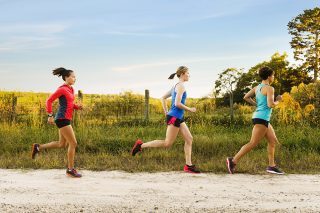
Photo: Istockphoto.com
The long run is a staple of most runners’ weeks. Many of us simply have a standing date: Every Saturday or Sunday we hit the roads and trails with a group of friends.
It’s not just a fun social gathering, though. There are lots of physiological benefits to be had from a regular long run—which, no, doesn’t actually have to happen every single weekend or be the same duration every time out
During your long run, says Greg McMillan, founder and head coach of McMillian Running, you deplete your glycogen stores and build up fat-burning efficiency, you condition your musculoskeletal system and recruit new muscle fibers, and you train your brain (and body) for fatigue. You also build capillaries and mitochondria, thus increasing your running efficiency, says Pete Magill, a Masters record holder, coach and author of the forthcoming The Born Again Runner. But some of the mystique of the long run is simply mystique.
“We don’t know exactly why the long run works so well,” Magill says, “but we also know that no one who’s a successful distance runner goes without a long run.”
We also know that successful runners aren’t just slogging through the same boring miles. Here are ways to get more out of your regular long run.
1. Don’t run so far
“It’s a different world when you run 90 minutes than when you run under an hour,” says McMillan. But it’s a whole other world when you run three hours—and that’s not necessarily a good thing.
Many new marathoners think if they’re going to do a four- or five-hour marathon, then they need to run four or five hours in training. But that’s not the case, says Magill. You get most of the benefit you need from two hours (or up to three), and new runners overstress their bodies going longer than that. If elite runners only run two or two and a half hours for their long runs, then why would someone who’s not as experienced run farther?
“Unless you’re going to take two weeks off after,” says Magill, then you won’t be able to recover well. And of course you probably aren’t going to take two weeks off.
Your long run should only be about 50 percent longer than the length of your regular runs and not more than 20–30 percent of your total mileage for week.
2. Stop over-fueling
Typically, we’ve been taught that fuel and water are good during workouts. Therefore, more is better. But, according to McMillan, lots of people end up over-fueling. If you’re preparing for a race, you might want to “run without a buffet around your belt,” he says.
Eating and drinking less teaches your body to utilize fat stores more effectively and to become better at dealing with bonking. Research suggests that occasional glycogen-depleted runs can improve glycogen stores and performance. They also teach you to deal with being a little bit miserable. “We need to accept suffering as part of the deal,” McMillan says.
However, not taking in enough fluid or carbs does impact recovery. If you are glycogen-depleted for every run, it could impair your overall performance. Instead, McMillan advises easing into less and less fuel on your long runs. Then, as you get closer to your race, put it back in and practice your race nutrition.
RELATED: 6 Ways to Carry Gels on Long Runs
3. Pick it up at the end
The most important thing in all your long runs, both McMillian and Magill say, is to know what the purpose is. Sometimes that means the long run should be very easy. Sometimes that means it shouldn’t.
McMillan has found his runners have a lot of success with what he calls “fast finish long runs.” In these runs, you start very easy, slowly progress to goal marathon pace in the middle, and then run as fast as you can for the final 30–45 minutes.
“It teaches you to run fast when you’re really tired,” he says. It’s not feasible to run a marathon in practice, so these runs give you a chance to simulate marathon-type fatigue in less time.
McMillan’s runners often do three or four of these types of long runs in the two months leading up to their marathon.
Other types of long runs could include efforts at goal marathon pace or in-and-out tempo work—though many of those workouts are more common among elite runners. And some of your long runs should be very, very slow. The point is to know what the point is.
“You shouldn’t just throw a long run against the wall and hope it sticks,” Magill says.
RELATED: How Fast Should Your Easy Long Runs Be?
The post 3 Tips for Getting More Out of Your Long Run appeared first on Competitor.com.
How to Beat 6 Common Excuses for Not Running
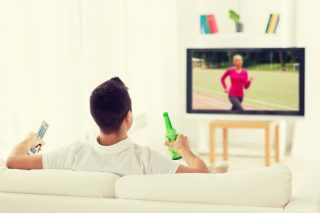
Photo: Shutterstock.com
More than 500 runners currently have a streak of not missing a run (at least one mile) for a year. The leader is Jon Sutherland of West Hills, Calif., who has run every day since May 26, 1969—more than 47 years. The rest of us need to take a day off now and then.
However, when you start missing scheduled runs for reasons that you don’t truly believe are valid, that’s called making excuses. We are here to help you fix that problem. Let’s address six of the most commonly cited rationales for flaking and examine how you can get those workouts done.
Excuse 1: Not a Morning Person
When life gets in the way of running, mornings are often the most reliable time to schedule a workout. Try setting an alarm—not just for a wakeup call but also one in the evening, an hour or so before you want to sleep. Take that time to prepare your morning running gear and wind down. Try to avoid all screens for 60 minutes before bedtime to help calm your brain. And remember that nobody likes the first five minutes of an early morning, but it’s worth it after that.
RELATED: Rise and Run: How to Become a Morning Runner
Excuse 2: The Weather is Awful
This is one situation where throwing some money at the problem can really help. Quality outerwear, like a running jacket that’s both waterproof and breathable, let’s you handle surprisingly cold, wet and miserable conditions. Once you get going it’s usually not as bad as you feared, and you get to feel like a hero for braving the elements. Be sure to post your run on social media so everyone can see how tough you are.
RELATED: 9 Dry Jackets for Wet Runs
Excuse 3: Too Stressed Out
Your boyfriend is a jerk. Your kids don’t listen. The boss seems to have gone certifiably insane. We get it—there’s a lot more to life than running and other stress points can diminish your willpower. In these situations, try thinking of running as some much-needed “you time.” A 15-minute jog might not make you a world champion, but it is going to be 15 minutes where the boyfriend/kids/boss can’t say anything annoying.
RELATED: What is Cortisol and Should You Be Worried About it?
Excuse 4: I Suck, So Why Even Try?
Ask yourself this, Mr. or Mrs. Perfectionist: Does anyone other than you care about how fast or slow of a runner you are? Chances are that most of the people who know and like you think you’re awesome for reasons that have nothing to do with your 10K PR. It’s just you that suspects you’re a failure for shuffling through the last few miles of your most recent race or run, so take some pressure off and just go for a run. (Tip: Don’t bring a watch!)
RELATED: Six Ways to Simplify Your Training With Steve Jones
Excuse 5: Burned Out on Running
We get it. Running is a demanding activity and the mental fatigue of pushing through discomfort is sometimes as challenging as the physical pain. But are you really doing everything you can to keep your runs fun and inspiring? Have you sought out new places to run, or do you grind out the same two or three loops in your neighborhood every week? When is the last time you ran with a group, or even a partner? Before you declare yourself burned out make sure you’re trying the things that can make running new again.
RELATED: To Avoid Training Burnout, Have Fun
Excuse 6: Running Hurts
Yes. Yes it does. Running is a high-impact sport that requires you to exert terrible forces on your muscles and joints with every step. If you think you really are injured, or about to get injured, it’s a very good idea to skip at least a workout or two. Knowing when to back off is an essential skill for any runner. But remember, it’s the challenge and physically demanding nature of the sport that drew you to it in the first place. Everybody hurts. Everybody cries. But hold on, hold on. (R.E.M. lyrics to live by.)
RELATED: Six Reasons to Go See a Physical Therapist
The post How to Beat 6 Common Excuses for Not Running appeared first on Competitor.com.
August 31, 2016
A Good Deed with Olympic Spirit at a Masters Track Meet
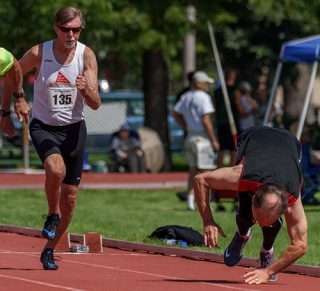
Sometimes amazing things happen right before our eyes. As I was photographing the the Rocky Mountain Masters Games track meet on Aug. 28 in Fort Collins, Colo., I witnessed a simple deed steeped in Olympic spirit. At the start of the 75- to 79-year-old division of the 50-meter dash, 76-year-old runner Bobby Fischer of Denver (second from the right in the photo below) got a fast, clean start off the line and was a couple of strides into his race. But as he was sprinting away, it became apparent that the guy to his left was tumbling to the track. What happened next was amazing …
Photo Gallery
1 of {count}
Back to Start
View Larger Image
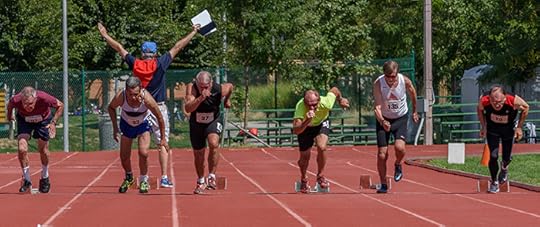
Here's the start of the 50-meter dash for the 75-79 age group at the Rocky Mountain Masters Games, an annual track meet put on by the Colorado Masters Track & Field Club for 35-and-older athletes interested in competing in a variety of sprints, distance races, jumps and throwing events. Photo: Dave Albo
View Larger Image
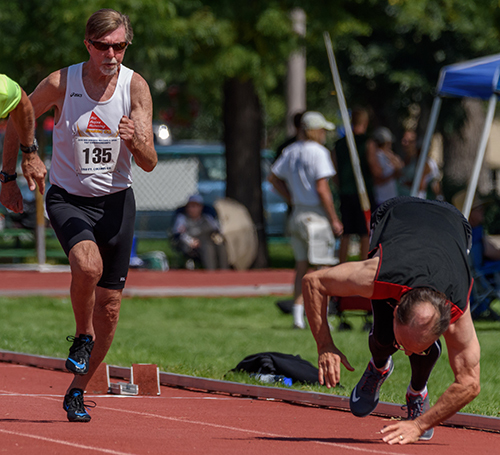
As Bobby Fischer was off to a strong start, the man next to him, 75-year-old Dale Alexander, took a tumble. Photo: Dave Albo
View Larger Image
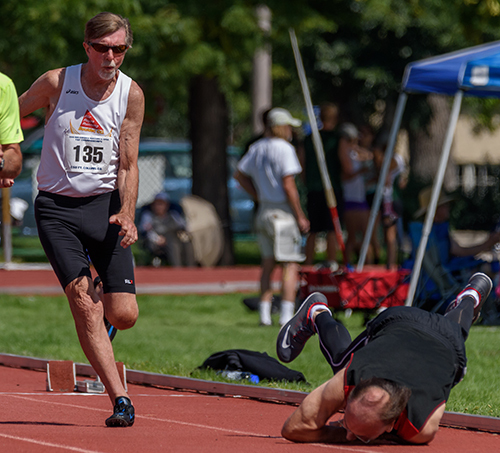
That tumble led to a hard crash onto the track. The fall was pretty harsh—his glasses cut his face and he had a big scrape on his shoulder. Photo: Dave Albo
View Larger Image
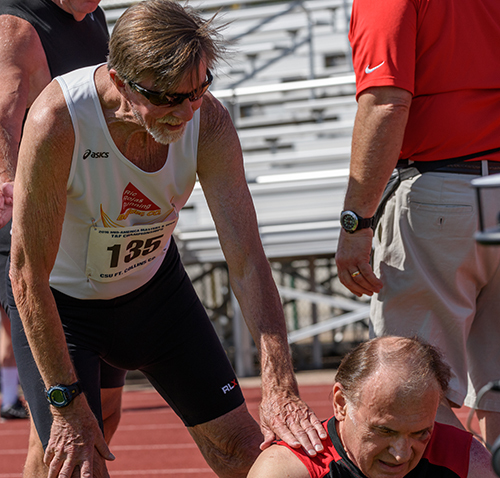
In a scene reminiscent of the good will on display in the semifinals of the women's 5,000-meter run in the Rio Olympics between American Abbey D’Agostino and New Zealand's Nikki Hamblin, Fischer aborted his own race to help his fallen competitor. Fischer stayed there at the side of his downed fellow runner, offering comfort and support to Alexander. Photo: Dave Albo
View Larger Image
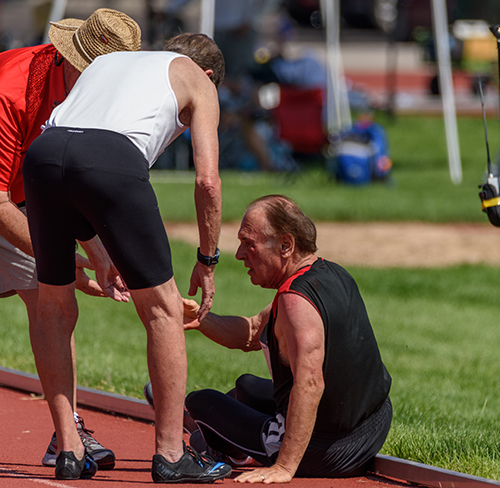
A twinge in Alexander's hamstring apparently had caused the whole thing. Although he didn't walk away—he was carted off the track—he turned out to be OK in the end. I hope he is all right, but at least he had support from a fellow athlete. Photo: Dave Albo
View Larger Image

After a long delay, Bobby was rewarded with a do-over thanks to the compassionate race officials, and he ran a respectable 50-meter time trial with fully automatic timing. The same thing happened to me when I raced the 50-meter dash at the Senior Games, the guy next to me tumbled. Unlike Bobby, I left that guy there to fend for himself. So well done, Bobby. You did the right thing and taught us all a lesson about compassion and competition. Photo: Dave Albo

More Galleries
The post A Good Deed with Olympic Spirit at a Masters Track Meet appeared first on Competitor.com.
August 30, 2016
Photos: USA 50K Championships/Tamalpa Headlands 50K
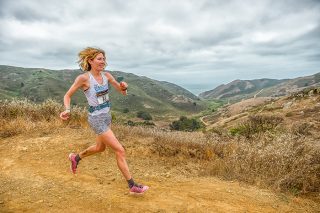
On Aug. 28, 230 courageous runners toed the line to race some of the San Francisco Bay Area’s most famous and challenging trails at the Tamalpa Headlands 50K. The race doubled as the 2016 U.S. 50K trail running championships, which meant the competition was steep and the pace was fast. Only about 15 minutes north from downtown San Francisco, the Tamalpa Headlands 50K is a demanding ultramarathon with more than 7,300 feet of elevation change over a single-loop. Cody Reed of Flagstaff, Ariz., (3:43:51) and Megan Roche of Sunnyvale, Calif., (4:20:51) were the overall winners, with Roche setting a new course record by more than 5 minutes. Roche suffered a painful face plant during the race, and so did her husband, David Roche, who placed second in men’s race (3:44.27). Get a glimpse inside this amazing race by checking out the photos below from Joe Viger. (Click here for race results.)
Photo Gallery
1 of {count}
Back to Start
View Larger Image
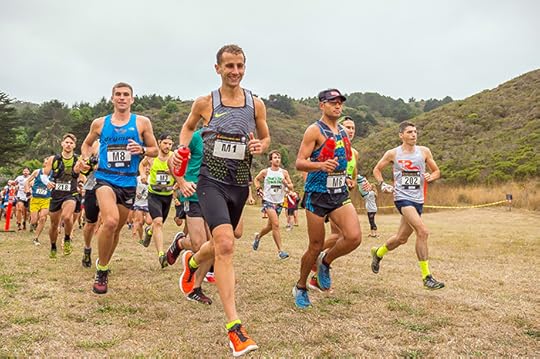
2016 USA 50K Championships/Tamalpa Headlands 50K
Photo: Joe Viger
View Larger Image
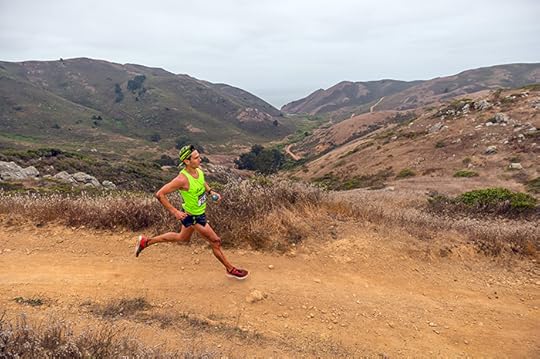
2016 USA 50K Championships/Tamalpa Headlands 50K
Photo: Joe Viger
View Larger Image
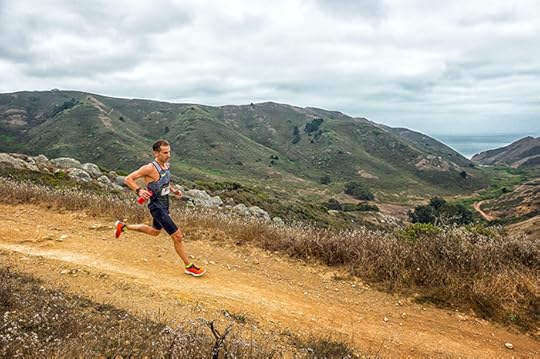
2016 USA 50K Championships/Tamalpa Headlands 50K
Photo: Joe Viger
View Larger Image
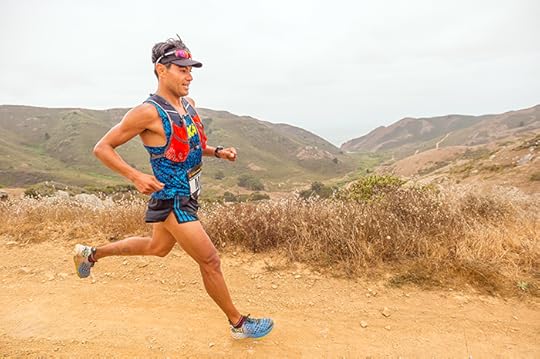
2016 USA 50K Championships/Tamalpa Headlands 50K
Photo: Joe Viger
View Larger Image
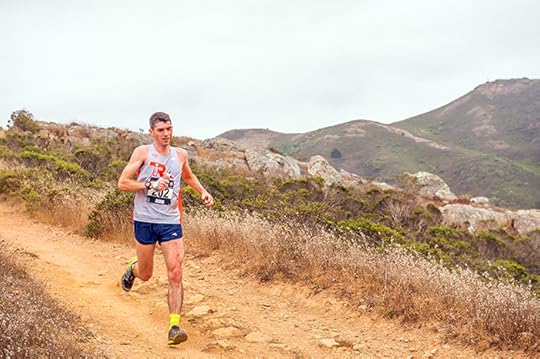
2016 USA 50K Championships/Tamalpa Headlands 50K
Photo: Joe Viger
View Larger Image
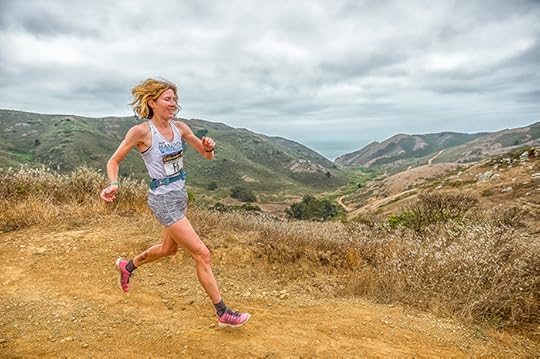
2016 USA 50K Championships/Tamalpa Headlands 50K
Photo: Joe Viger
View Larger Image
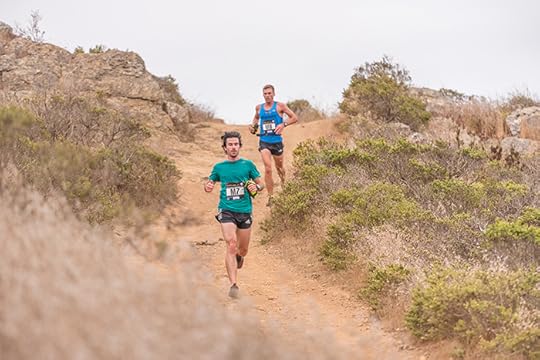
2016 USA 50K Championships/Tamalpa Headlands 50K
Photo: Joe Viger
View Larger Image
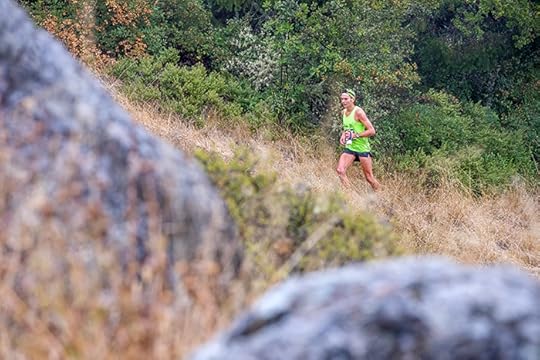
2016 USA 50K Championships/Tamalpa Headlands 50K
Photo: Joe Viger
View Larger Image
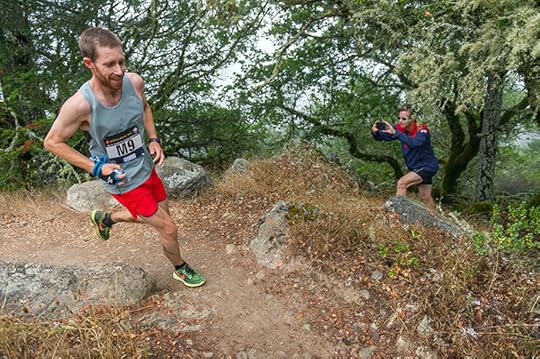
2016 USA 50K Championships/Tamalpa Headlands 50K
Photo: Joe Viger
View Larger Image
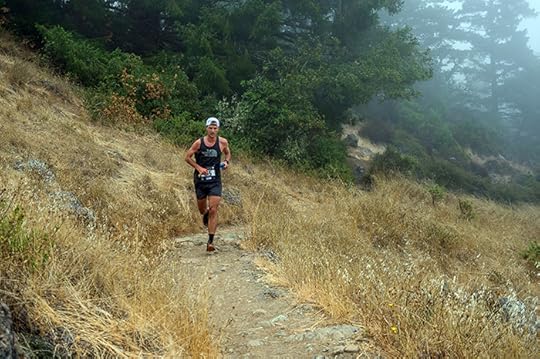
2016 USA 50K Championships/Tamalpa Headlands 50K
Photo: Joe Viger
View Larger Image
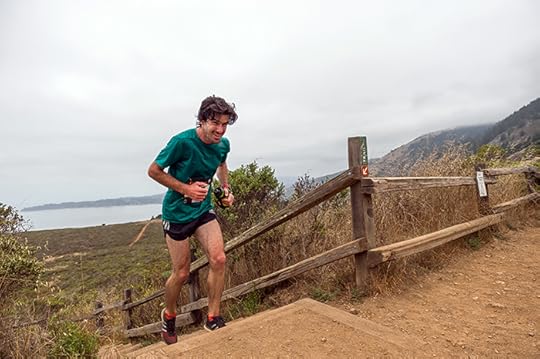
2016 USA 50K Championships/Tamalpa Headlands 50K
Photo: Joe Viger
View Larger Image

2016 USA 50K Championships/Tamalpa Headlands 50K
Photo: Joe Viger
View Larger Image
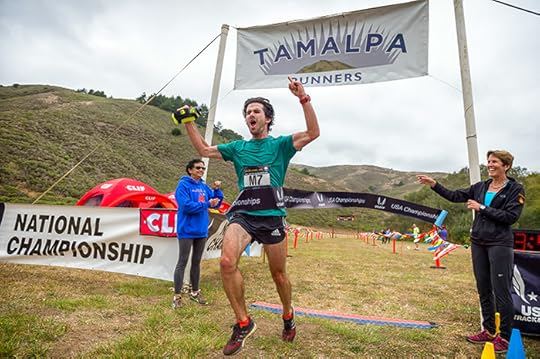
2016 USA 50K Championships/Tamalpa Headlands 50K
Photo: Joe Viger
View Larger Image
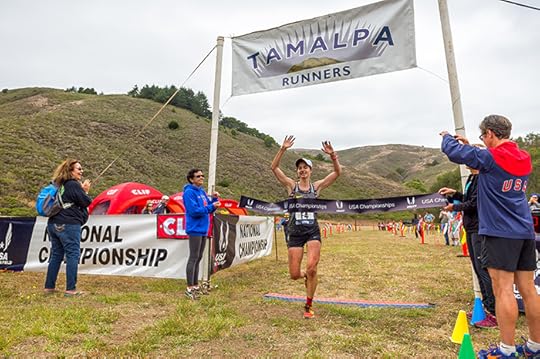
2016 USA 50K Championships/Tamalpa Headlands 50K
Photo: Joe Viger
View Larger Image

2016 USA 50K Championships/Tamalpa Headlands 50K
Photo: Joe Viger
View Larger Image

2016 USA 50K Championships/Tamalpa Headlands 50K
Photo: Joe Viger
View Larger Image
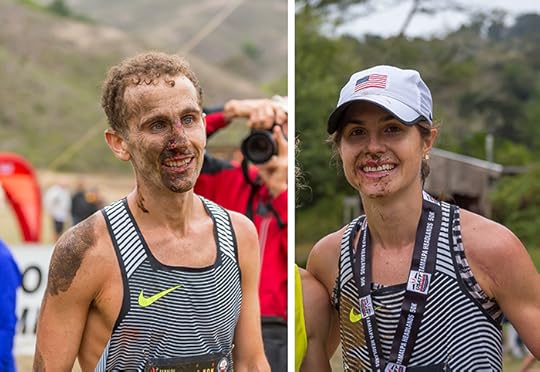
2016 USA 50K Championships/Tamalpa Headlands 50K
Photo: Joe Viger

More Galleries
The post Photos: USA 50K Championships/Tamalpa Headlands 50K appeared first on Competitor.com.
Joe Grant Sets New Colorado 14ers Record With Human-Powered Approach

Joe Grant stands atop 14,275-foot Torreys Peak about 55 miles west of Denver on Aug. 25 during his self-contrived Tour de 14ers. It was the second-to-last peak in his human-powered, self-supported 57-summit link-up. Photo: Ron Braselton
At 1:15 p.m. on Aug. 12, noted ultrarunner and renaissance adventurer Joe Grant is sitting atop Mount Antero eating a gas station bean burrito. He’s at 14,269 feet on the 10th highest peak in Colorado, but his spirit and energy are at an all-time low in a place where most people feel overwhelmed by positive energy.
“It was one of the worst days, it was horrible, I took away the mental focus and it was terrible,” Grant recalls. “So when I let go mentally there, it just killed me, I was just stumbling around.”
The 33-year-old Grant is an accomplished ultrarunner, climber and bikepacker, with a runner-up showing in the Hardrock 100 in 2012 and a sixth-place finish of the 560-mile self-supported Colorado Trail Race last year, among many other results. That means he’s experienced a wide range of highs and lows in some very rugged mountains. After bike-packing more than 700 miles and running up 29 of Colorado’s 14,000-foot mountains in the span of 18 days, a bad day was hardly a new experience. But for Grant, it was one of the lowest points on his epic self-powered Tour de 14ers.
Setting out from his house in Gold Hill, Colo., in the foothills west of Boulder, on July 26, the Tour de 14ers was a simple enough idea—link-up all of Colorado’s 14,000-foot peaks, 57 in total, by self-powered and self-supported means. In this case, the plan was to ride his bike between each peak and then run up it as fast as he could with no additional help or vehicular assistance whatsoever.
Atop Antero, halfway through his solo tour, Grant was having a mental and physical crash. “In a lot of ways, you try and set things up so that you are in a continuous flow,” he says. “So I would plan and think about biking and running up the peaks, then coming back down, keeping the flow going.” In this case, the flow had stopped.
After stumbling down the endless talus slopes of Antero, Grant got back on the bike that he had stashed early in the morning and rode the rocky four-wheel road down to the next turnoff, where he headed back uphill, this time to run Mount Princeton.
Carrying all of his gear on his bike, Grant took a minimal kit with him on his monthlong tour. Over the course of the entire adventure his running gear consisted of two pairs of Scarpa running shoes, a pair of shorts, a T-shirt, a long sleeve shirt, rain pants and jacket, a change of socks, and a Buff headband. At each peak, Grant would stash his bike somewhere near the trailhead, load his running vest with Snickers, trail mix, and frozen bean burritos before heading up to tag the summits. Then he would bomb down to his bike, strap his shoes onto the back of the frame, change his shorts, and start pedaling to the next trailhead. He repeated this “rhythm” for a full month.
“My idea was to just promote local, self-powered adventure,” says Grant, a professional athlete and coach sponsored by Scarpa, Patagonia, Reeb Cycles, and microbrew beer brand Oskar Blues. “To do something that was going to challenge me, maybe under my own power, maybe from my own doorstep.”
And what an adventure Grant had. He was rained on, snowed on, had to sleep in a Forest Service bathroom at one point, smashed his bike rim and had to wait two days while another rim was sent overnight. He survived largely on gas station food—frozen bean burritos, Snickers bars, Clif Bars, muffins, chocolate milk and cookies. When he came through a town, he would gorge on high-calorie foods—burgers, fries, ice cream or anything else he could get down.
“It’s such a long month, you have these really big ups and downs,” he says. “Some days you think you can just go all the time, then other days you are just down in a hole.”
It was often the small things that kept Grant going—a friend joining him on a peak, a good bivy spot for the night, a warm ray of sunshine in the morning, some blissful section of singletrack coming off the peaks. “I really wanted to prioritize the process, the experience,” he says. “It’s not about spreadsheets or records.”
For Grant, being in the mountains for an extended period of time, testing his own personal mental and physical limits, was the process that he craved. That craving was fully satiated several times during the Tour.
“Doing the Wilson group (of 14ers) was hard, it was just raining so much, and there is so much talus and crappy rock on that set of peaks, that mentally it was very hard to stay on point for the entire time,” he says.
MORE:
Likewise, his crash on Antero came after running up Wetterhorn and Uncompahgre Peak, the sixth highest peak in Colorado, plus biking over 100 miles the previous two days. “After Antero, it was this moment of doubt, I thought I had tapped my reserves too much in the San Juans, you are neither here nor there, and I had never done the Elks so it was like this looming thing,” he admits.
However, the Elks proved not to be a challenge for Grant. Peddling his bike primarily in the afternoons and into the evenings, he posted up at each trailhead so that he could tackle the peaks early the next day to avoid the worst of the weather. Coming off of North Maroon Peak, Grant says he got “into this mess, it was snow and ice, and messy and stressful—I let out a ton of rage in the boulder field, just yelling and screaming at myself. But then I got down finally and back to the trail, and I still had some energy.”
Over and over Grant repeated this process, refining it more and more at each peak despite the accumulating mental and physical fatigue. “After the first week or so, I would only bring with me a half liter of water and just fill it up along the way,” he says. “It was so wet out, there was so much water everywhere. I always brought more food with me, however, than I needed.”
RELATED: Read Joe Grant’s Essay on “How the Mountains Changed the Way I Run”
After 29 days, Grant only had 100 miles to ride and one big peak to summit, Longs Peak at 14,255 feet, before completing his Tour and setting a new record for doing all of the 14ers self-powered. But there was still one more challenge to do as he biked past his house on the way to Longs.
“Oh god, it was like 7 miles to home or 40 miles to Longs. That was so hard, it was raining and I just wanted to be done,” he says. “But then I got to Longs at 3 a.m. and there were all these people psyched and getting ready to go up the peak. That really got me motivated to do one more.”
And then it was over. When Grant got back to the Longs Peak trailhead, he road his bike 25 miles back to his house in Gold Hill, stopping the clock after 31 days, 8 hours, and 33 minutes of being on the move. He had ascended over 100,000 feet during the runs and biked more than 1,400 miles. After a full month on his own, Tour de 14ers was over.
“I’m not going to lie, it was very anti-climatic, biking home after Longs,” he says. The finish may have been anti-climatic, but the adventure and achievement will last forever. “To me, it was OK that there was no finish line; you set a context and you just see what happens,” he adds.
In this case, it’s a new record—breaking the previous record of 34 1/2 days set two years ago by Justin Simoni—but for Grant, it is a much deeper appreciation and understanding of his own personal limits. “I like going with the natural rhythm, and for me, creating a context that allows me to test my personal limits, and then seeing what unfolds.” In this case, a running and biking achievement like no other; one that will last a lifetime and that will continue to influence Grant as a runner and adventurer.
MORE: Find more details at Joe Grant’s Blog
RELATED: Do Something Epic—Planning an Unsupported Adventure Run
RELATED: How Andrew Hamilton Set the Colorado 14ers Speed Record
The post Joe Grant Sets New Colorado 14ers Record With Human-Powered Approach appeared first on Competitor.com.
August 29, 2016
Tech Buzz: Fitbit Debuts Charge 2, Flex 2 Fitness Trackers
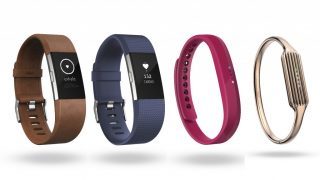
The new Fitbit Charge 2 and Flex 2 in various band options.
I have never used or owned a fitness tracker. If I’m running, I wear a GPS watch. If I’m biking, I have a bike computer. If I’m doing anything else, well, I can always look at a clock. But Fitbit’s improved ability to track all your activities and stats, and then sync them into one spot was interesting to me.
Two new upgraded Fitbit devices—the Charge 2 and Flex 2—officially launch on Aug. 29, and we got a preview to test them out over the last few days. An upgraded app experience with guided runs, known as Fitbit Adventures, will be coming as well.
RELATED: Take a Sneak Peek at New Running Wearable Tech Gear
Charge 2
The new Charge 2 ($149) is an update of the Charge HR—so it still has the built-in wrist-based heart rate and automatic activity tracking of steps, calories, elevation, and sleep.
What it’s added is an expanded ability to recognize specific workouts. You can set a handful of activities like running, biking, weights, treadmill, or yoga. Then simply hold down the start button while in that activity screen and press stop when you’re done. If you forget to press start/stop, it automatically recognizes most activities after about 10-15 minutes. This is not a flawless system, but is a nice backup. The Charge 2 also syncs with the GPS in your phone to measure pace and distance—which you are now able to see on the watch screen while working out.
I had mixed results with these workout functions, which are admittedly not necessarily designed for high-performance. A 40-minute run, which I did without my phone’s GPS, was surprisingly accurate in terms of distance and pace. It wasn’t precisely accurate, but, given it was only operating off-stride length, I was impressed. Conversely, I was unimpressed with a cycling workout I did while using the GPS on my phone to sync. The GPS went out about 40 minutes into a three-hour ride—which isn’t Fitbit’s fault, but likely my phone carrier’s doing—but I would have expected the Charge 2 to recognize I was still in cycling mode and to pick the GPS back up later. Instead, it told me I had ridden just 8 miles in three hours and that I had somehow walked nearly 6,000 steps while riding my bike. This seems like a mistake.
My only other pet peeve with the workout functions was that I couldn’t figure out how to pause a workout without stopping it completely, and I’d prefer to be able to look down at the screen and have it always on, instead of having to tap it or turn my wrist to kick-in the auto-on. But plenty of people will likely have no issue with either of these things.
What I was mainly curious about was being able to see the calorie, sleep, and heart rate data over time to spot trends or patterns. I was particularly interested in a new feature in the Charge 2 that calculates what it calls your Cardio Fitness Score, which is essentially an approximate VO2 max, or a measurement of the maximum amount of oxygen an athlete is capable of using.
RELATED: Take a Sneak Peek at 2017 Running Shoes
According to Fitbit’s product developers, the Charge 2 calculates this score by using your resting heart rate patterns and heart rate during workouts. When compared with lab VO2 max tests, they said the Cardio Fitness Score is highly accurate. Once you do a run (or a few runs) with the GPS on your phone, and the device has more data to work with, it narrows down and improves its calculation. For runners, this is a useful piece of data, particularly if you can see how you improve, or don’t improve, over time and with training. For people who are not familiar with VO2 max, the Charge 2 also tells you how you fit within the appropriate demographic range and gives you suggestions on how to improve.
The heart rate data seems, on the whole, fairly accurate. Generally speaking, my heart rate has been about right for my runs (130-150 bpm) and bike rides (around 120 bpm), and my resting heart rate sitting on the couch seems correct (50-60 bpm). At times, though, it goes blank and sometimes there is a lag before the heart rate numbers go up or down. For example, when biking up a very steep hill my heart rate still read 93 bpm, which is unlikely.
(The caveat on heart rate data is that you don’t necessarily know why your heart is doing what it’s doing. And, at some point, a high resting heart rate could be as much an indicator of overtraining as of under training. But, for the general user, this isn’t likely an issue.)
I haven’t been able to get the Charge 2 to give me a Cardio Fitness Score yet, though, because it hasn’t been able to get the data it needs, and because of issues noted below.
As a watch, it’s exactly the kind I would wear: relatively small and sleek-looking. There are also a range of bands you can choose from and digital watch faces. And it now gives you text message and calendar alerts, in addition to caller ID. You can set alarms and reminders to move, which will light up and/or vibrate on the watch.
It’s currently not doing me much good as a watch, though, because I’m traveling and I can not get it to update the time zone. No matter how many times I manually change the time zone in the app, restart, and re-sync the device, it still gives me the wrong time on the watch. (It’s correct in the app.) A perusal of the Fitbit help board suggests I am not the only one who’s had this problem with older Charge devices. This is becoming slightly maddening since the two devices, the app, and the desktop dashboard can’t agree on a time, meaning my stats and activities are being attributed to different days.
Probably I should just relax and go through the new guided mediation/relaxation mode on the Charge 2, which uses your heart rate and heart rate variability to guide you through a two-minute breathing exercise.
The battery lasts five days and I’ve had no issues. Once I can get it to recognize my time zone, it actually seems like it will be fairly useful, not as a replacement for my bike computer, but as additional information. Or, if you’re not as obsessed as I am with a variety of workout details, but want an overall accounting of your health and activity, then you’d likely find the Charge 2 more than enough and a lot more convenient.
Flex 2
The Flex 2 ($99) is 30 percent slimmer and lighter than the original Flex band. In fact, if you often have a few hairbands around your wrist, then the new Flex 2 blends right in.
Since the Flex 2 is still in beta, I can’t provide a full review. But what it is offering is a new swim mode, which also means it’s waterproof, so you don’t need to worry about it getting wet in the shower or washing dishes. The device has increased auto exercise recognition, so that it should automatically recognize popular activities like running or biking, one of which you can set as swimming.
Again, this isn’t foolproof and isn’t designed for high-performance. I’ve had mixed results with its swim recognition; it got the appropriate amount of time I swam but only recorded one-third of the distance I actually covered.
There are also a number of designer bands and accessories coming out in the next month from Vera Wang and New York designer Public School. You’ll be able to wear your Flex 2 out for the night and continue tracking all your activity. Honestly, if I didn’t tell you the new bracelets and necklace were from Fitbit, you probably wouldn’t notice. With gold, silver, or bronze options, they look like jewelry and are just as accurate as the standard bands.
Fitbit Adventures
In the next month Fitbit is also releasing a remodeled app, which will include Fitbit Adventures. Currently, you can join challenges or see how you stack up on leaderboards in the Fitbit app, which often correlate to higher activity levels. But Adventures will be a self-driven challenge to motivate people to exercise more.
The first of these will guide you down three trails in Yosemite. These are actual trails in the park and renown outdoor photographer Chris Burkard has shot photos that will pop up on your phone screen as you hit the correlated spots as you walk or run. You can stop and scroll around the pictures, as if you’re on the actual trail in Yosemite, and you’ll be guided with information and tips. Be careful, though, if you’re looking at your screen as you go. Don’t run off a cliff.
Another “Adventure” with the New York Road Runners will allow users to experience the New York City Marathon as they run, see the crowds and the boroughs, and experience the race. It’s a way to run the marathon without winning the lottery. Or train for the race if you did get an entry.
The post Tech Buzz: Fitbit Debuts Charge 2, Flex 2 Fitness Trackers appeared first on Competitor.com.
Ryan Hall's Blog
- Ryan Hall's profile
- 21 followers



